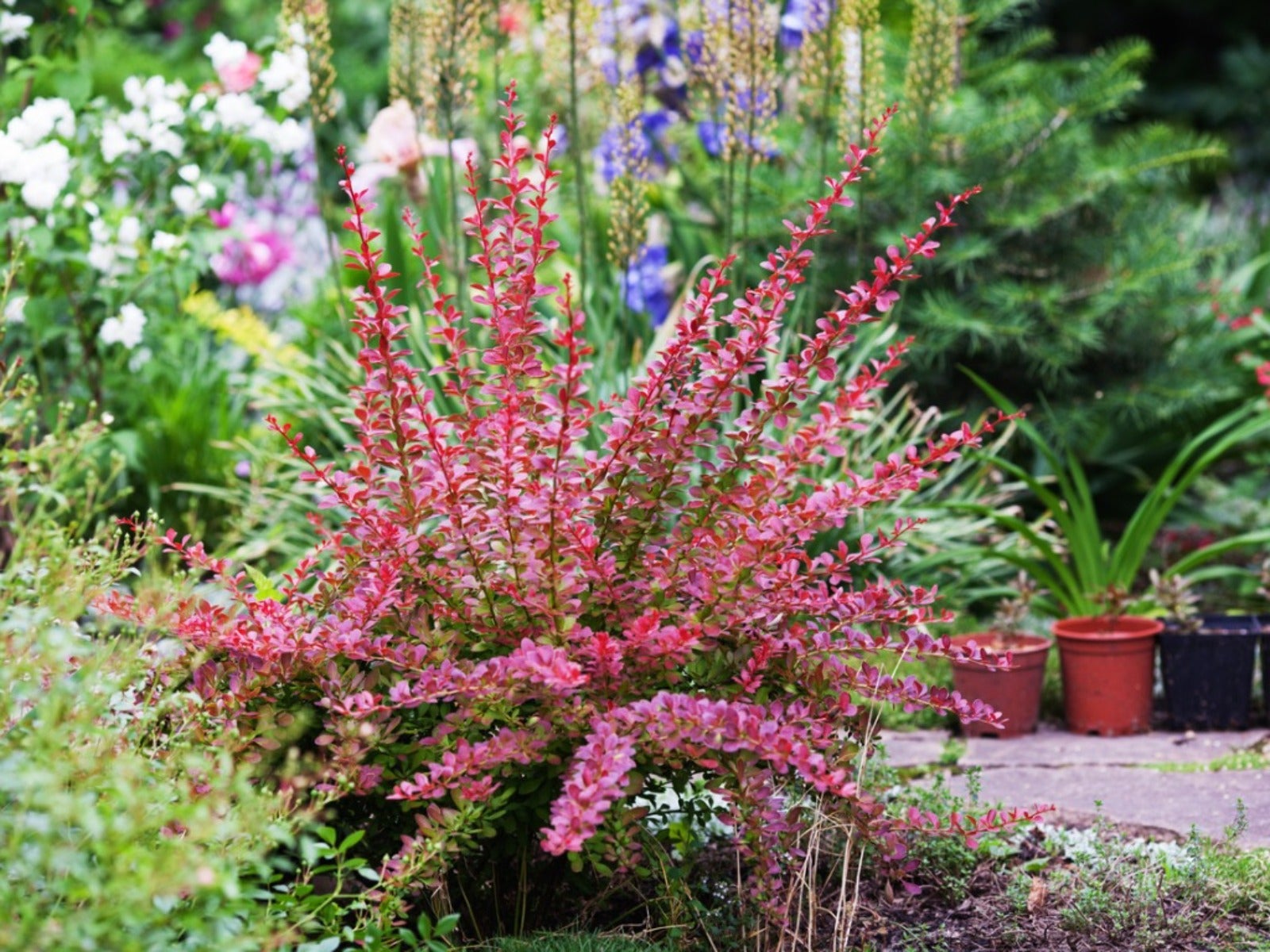Best Barberry Substitutes – Plant These Natives Instead


It’s easy to understand why Japanese barberry is so popular: it’s a small shrub with pretty leaves, bright red berries and easy-care ways. What’s not to like? Quite a few of its qualities are on the downside list, however, and any one of them should be sufficient to make you want to eliminate Japanese barberries from your backyard. If you’ve been asking “what can I substitute for barberry bushes," read on for some tips.
Japanese Barberries
Yes, these shrubs are low maintenance and attractive, but they are problematic enough to cross off your list. First, they have needle-sharp thorns that can rip sensitive skin. While this makes them work well in defensive hedges, children and bare-legged adults might get more of a scratching than they'd like.
But worse, Japanese barberry are wildly invasive. These “small” shrubs proliferate quickly, forming dense thickets. Their seeds are spread by birds who devour the berries and help the plants to invade a variety of habitats, even heavily shaded woodlands, shading out native plants.
And to make matters worse, barberry also provides a home for deer ticks, spreaders of lyme disease. The fact that these plants are invading many areas means that there is more of a threat of getting lyme, creating a public health concern. So it’s time to look for a barberry bush alternative.
Look-Alike Substitute for Barberries
If you are a barberry fan, you might wonder if there is a viable alternative to barberry bush. There are a large number of possible substitutes for this invasive shrub, each with its own attractions.
If you love the look that barberry offers and want something similar, consider ninebark (Physocarpus opulifolius). This shrub gets the votes of wildlife, like birds and pollinators, with its white flower clusters and seed pods in autumn. This is a great replacement for barberry since it is extremely tolerant of cultural conditions and looks great when pruned. Look for a ninebark cultivar with maroon leaves for a barberry look-alike.
Another similar maroon shrub is fragrant sumac (Rhus aromatica). It grows well, providing low, spreading coverage without ever getting wild. Its flowers won’t wow you, but they do appeal to butterflies.
Sign up for the Gardening Know How newsletter today and receive a free copy of our e-book "How to Grow Delicious Tomatoes".
Or try red chokeberry (Aronia arbutifolia), with white spring blossoms and red fall foliage. Berries hang on the bows into winter. Gray dogwood (Cornus racemose) shrubs also have white flowers and deed red fall color.
Other Barberry Bush Alternatives
If you are wondering what to plant instead of barberry, and you don’t need a similar look, the choices are many. Pick something that works well in your climate and in the sun exposure you can offer it.
- Inkberry holly (Ilex glabra) – This evergreen shrub is a compact delight in hedges or landscapes. Occasional pruning keeps the shrub shapely.
- Virginia sweetspire (Itea virginica) – the spring flowers of this U.S. native look like bottle-brush flowers, but sweetspire also offers outstanding fall color. A good choice for wet soils.
- Dwarf fothergilla (Fothergilla gardenii) – You may not have heard of this native plant but it is worth a look. Dwarf fothergilla cultivars like ‘Blue Shadow’ offer leaves that have a bluish hue, but for maroon color, go for ‘Mt. Airy’.
- Other possibilities: Oakleaf hydrangea (Hydrangea quercifolia), Highbush blueberry (Vaccinium corymbosum), Summersweet (Clethra alnifolia), Mapleleaf viburnum (Viburnum acerifolium), Possumhaw viburnum (Viburnum nudum), Arkansas bluestar (Amsonia hubrichtii).

Teo Spengler is a master gardener and a docent at the San Francisco Botanical Garden, where she hosts public tours. She has studied horticulture and written about nature, trees, plants, and gardening for more than two decades, following a career as an attorney and legal writer. Her extended family includes some 30 houseplants and hundreds of outdoor plants, including 250 trees, which are her main passion. Spengler currently splits her life between San Francisco and the French Basque Country, though she was raised in Alaska, giving her experience of gardening in a range of climates.